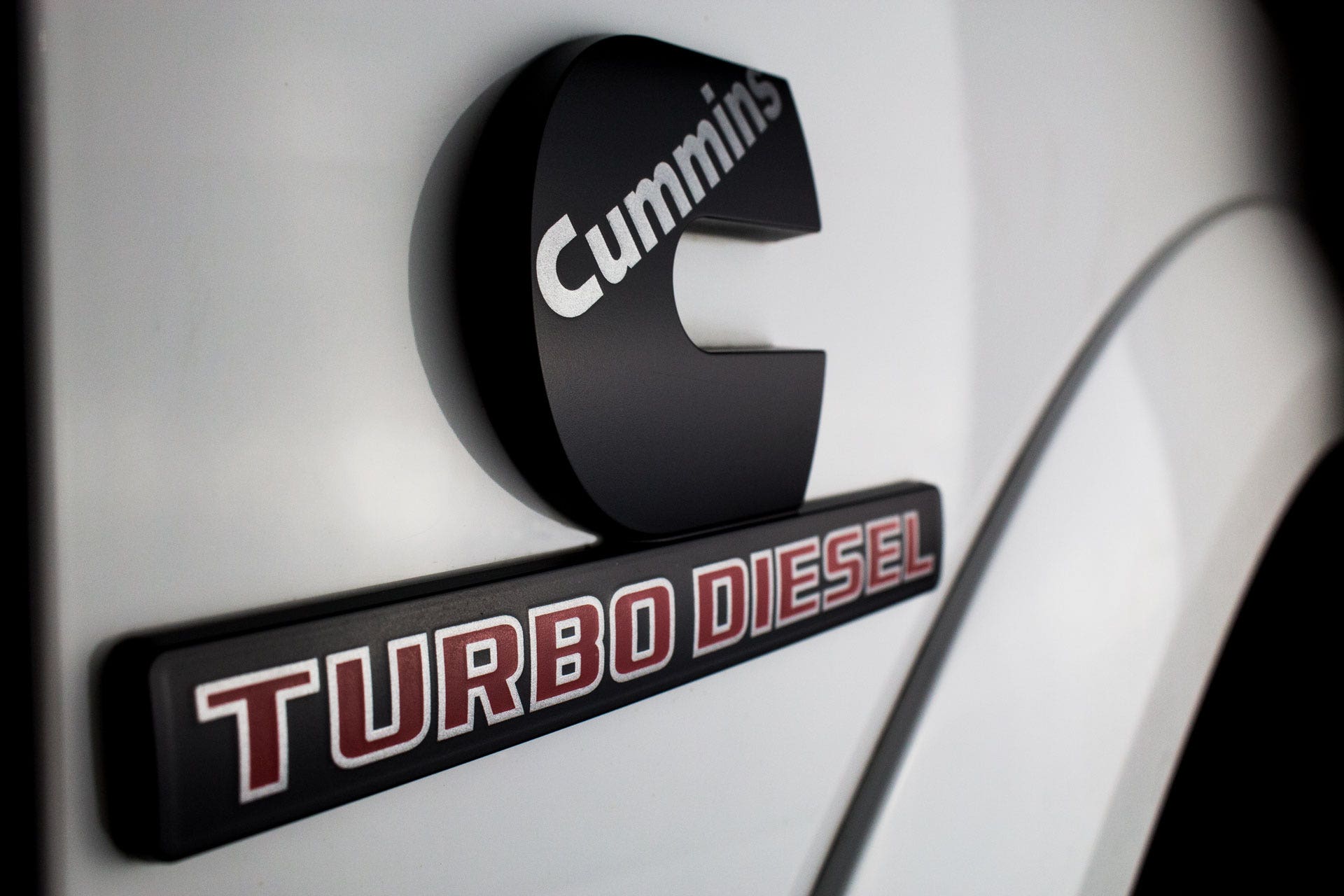
Universally Guarded - Universal High-Flow Diesel Catch Can R&D - Part 1 - The Plan
This Universal High-Flow Catch Can Kit is now available! Click here to check it out!
It's no secret that the world relies on the diesel engine. From the mega-motors powering cargo ships across the ocean to the 4-cylinder TDIs, the turbodiesel has become synonymous with longevity and dependability. Even after hundreds of thousands of miles, the deep chugging and piercing whistle of a turbodiesel keeps going. While the diesel engine is a staple of reliability, its lifespan is still determined by how it's taken care of. Even with all the advancements in technology and engineering, the diesel engine is still susceptible to one of the same issue that plagues its gas-powered cousin, blow-by.
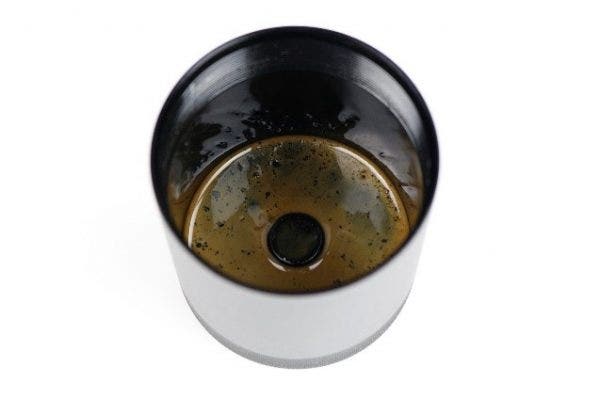
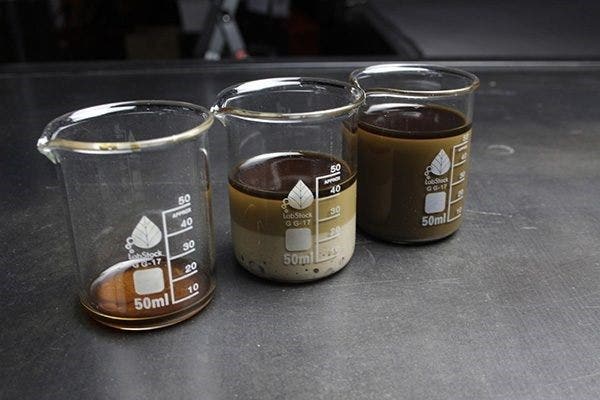
Blow-by comes in all shapes and sizes, and is never good for your top end internals.
The silent menace that is blow-by might be familiar to some, but for those of you in the dark on the subject, let's review. Oil blow-by is the by-product of the standard operation of an internal combustion engine. What's actually going on inside the housing is a highly choreographed dance involving intake and exhaust valves, camshafts, pistons, fuel, and the best part, thousands of explosions. Think of it like combining the ferocity of the 1812 Overture with the delicacy of the ballet.
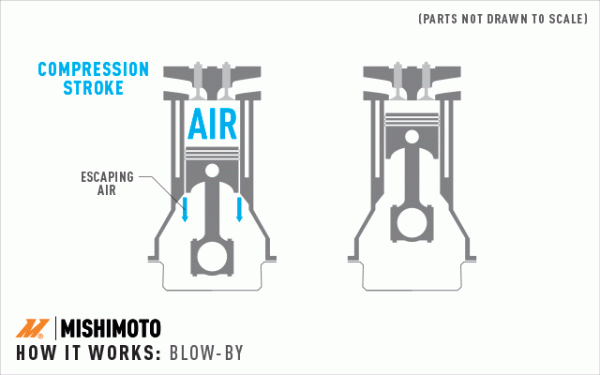
The amount of power produced is the result of each cylinder harnessing the energy of each one of these perfectly timed explosions. In some cases, however, combustion gasses consisting of unburnt fuel and air are squeezed"along with oil droplets"past the piston rings and into the crankcase. To keep the pressure from these fugitive vapors in check, the crankcase ventilation system, or CCV, routinely pulls blow-by, which includes the murky contaminants from the crankcase, and routes it back through the intake.
By now you should see the problem. The throttle body, intake and exhaust valves, turbo internals, and intercooler, all components you want to be kept clean, are now being coated in oil and fuel. While it might be humorous to picture those ballerinas trying to keep in time with the orchestra after putting them on an oil slick, these are important engine components we're talking about. The real result is carbon buildup on these parts, which can ultimately result in knock and a loss in engine performance.
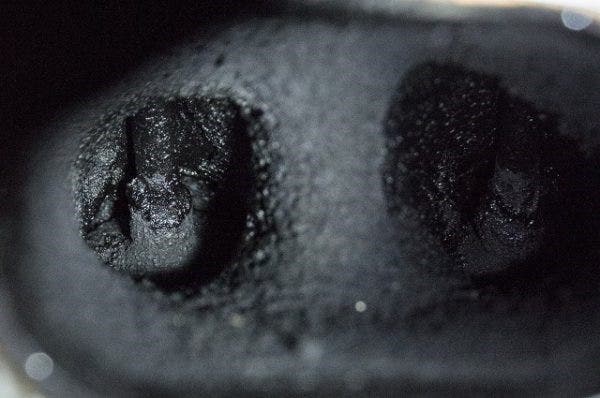
It goes without saying that this is not a good look for your intake valves.
Those of you who already have an extensive background in the tribulations of blow-by know the solution. Install a catch can. This handy device adds an extra layer of protection between the crankcase and coating of top-end components in oil and fuel vapors. The concept is simple: slow down the air. The contaminated air enters the can and has the chance to lower its velocity. The attached oil and fuel vapors can then condense on the walls of the can and allow clean air to be pulled out through a filter, which returns to the intake.
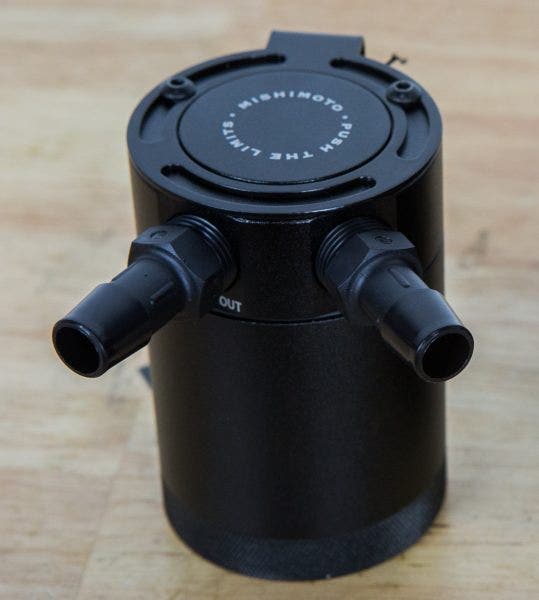
Catch cans are something that we here at Mishimoto are quite familiar with, and currently offer a wide selection of both universal catch cans as well as direct-fit kits. While our current cans are tried and true on a large variety of gas-powered vehicles, from forced induction four-cylinders to the roaring V8s that power Mustangs and Camaros, we've found them to be restrictive when equipped on the massive turbodiesels under the hood of most heavy-duty trucks.
The reason for needing to develop this new catch can system deals with compression. In gas-powered engines, a high compression ratio can be upwards of around 12:1, while the low end of the compression ratio for a diesel engine is 14:1 and can be as high as 24:1. What it comes down to is the subtle difference in how these two platforms work. Both variants follow the same 4-stroke procedure when producing power, and both ignite the fuel and air mixture after the compression stroke. On a gas-powered platform, the mixture is literally sparked from an arc produced by the spark plugs, and sends the piston back down the cylinder. In the diesel engine, there are no spark plugs. The piston compresses the air to the point where it reaches a temperature that will ignite the diesel fuel. On top of that, the pressure only increases once the turbo spools up.
The extra high compression means that diesels are more susceptible to blow-by and increased crankcase pressure. In order to add that extra layer of protection for the top-end internals, the catch can needs to handle more volume from each engine rotation.
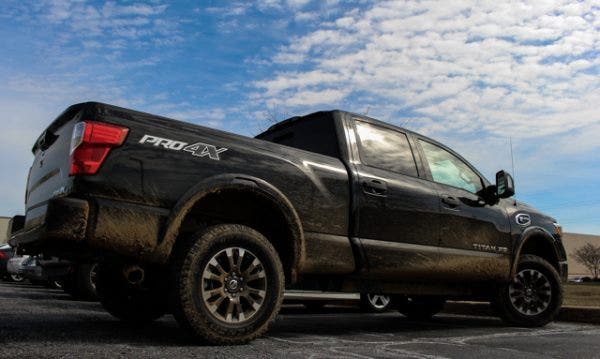
This is where we come in. Well, come back in. Some of you might recall that we already developed a catch can for one diesel engine, the 5.0L Cummins powering the Nissan Titan XD. That is where we discovered the problems of running one of our standard catch cans on a diesel engine, as we saw several check engine lights trapping the truck in limp mode. We ended up adapting our baffled catch cans to work on the Cummins by removing the filter and adding extra baffling.
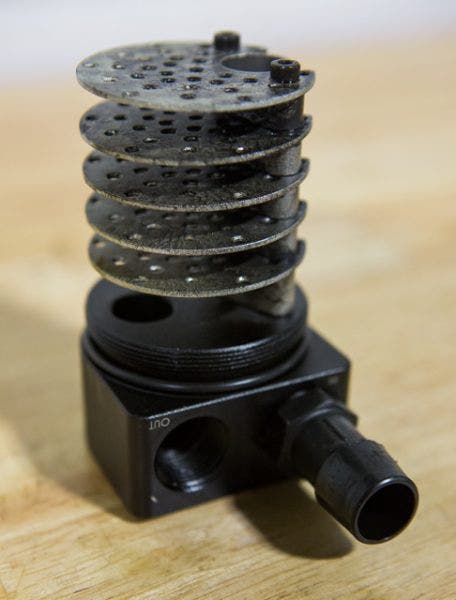
In the design process for our Titan XD catch can, we had to adapt our baffled catch can to include extra baffles, and remove the filter in order to maintain the increased flow in the 5.0L Cummins.
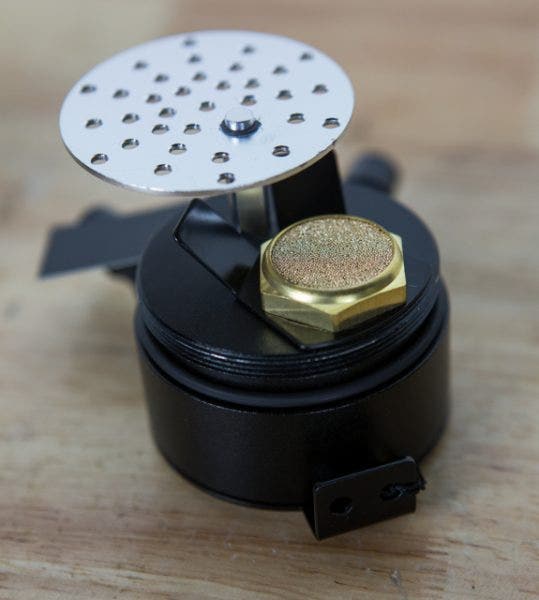
While this micron filter is porous enough to keep up with gas powered vehicles, it was the culprit for throwing check engine lights and putting our Titan XD into limp mode.
For the universal can, however, we're looking to do more than adapt a design. We intend to create a new system that will defend the internals of all diesels from blow-by. The plan, as the title states, is to create a high flowing catch can system that is rated to handle the increased pressure from the CCV system. This can also won't restrict the high horsepower or torque numbers produced by these hefty vehicles. These restrictions turn the project into a bit of a balancing act during development, since these requirements are more or less the opposite of each other. Fortunately, our engineer, Steve, has already been working on finding that balance.
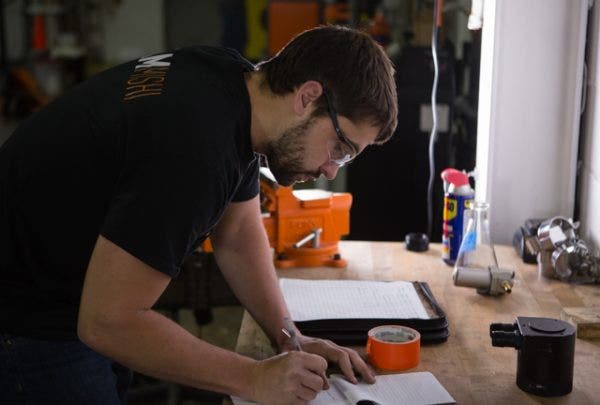
Steve working on his plan for bench testing our high-flow catch can prototype.
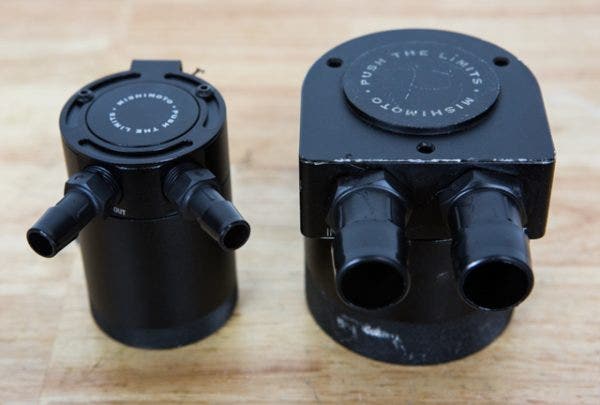
The style of the new can will imitate that of the standard can, but that's where the similarities end. Since this catch can is specifically intended for the surly workhorse diesel truck, we increased the size to match. The inlet and outlet ports are opened up to 1 inch diameters over the standard 3/8 inch to compensate for the increased pressure. This time around, instead of removing the filter and adding baffles, we're doing the opposite. We took the baffle out, and equipped a much larger and free flowing filter. The larger filter will allow the clean air to pass through, without throwing any warning lights and still capturing contaminates.
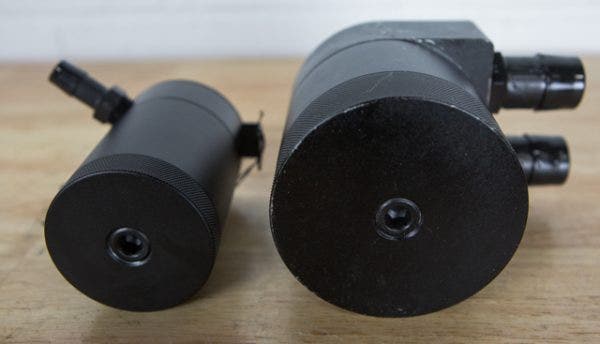
Increased compression means increased blow-by, and our new design will be able to contain it all.
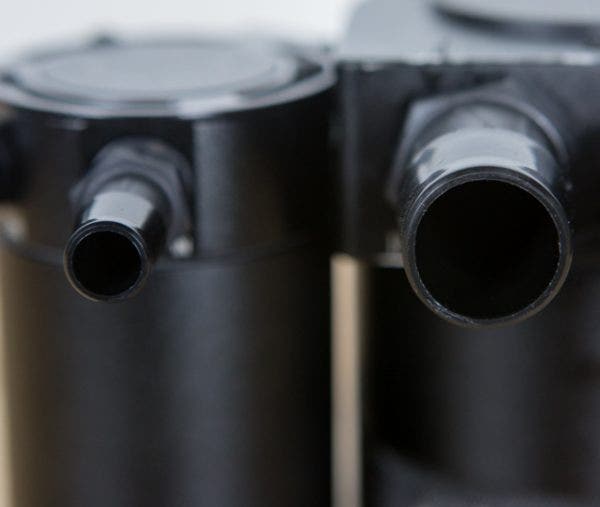
With an increase from 3/8 of an inch to a full inch inlet an outlet diameters, the increased pressure from the diesel engine will be able to pass through without restriction.
Coming Up
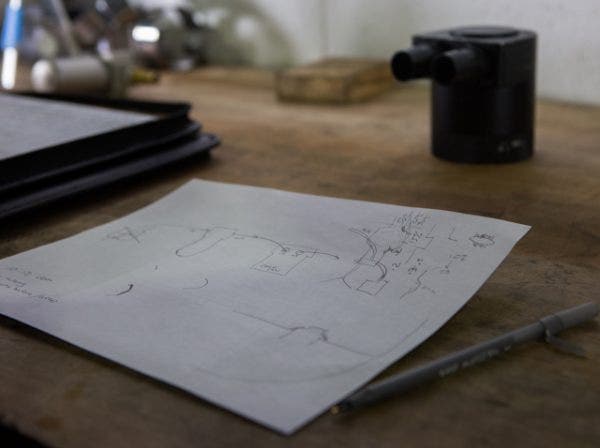
Steve has his master plan for testing all mapped out.
No product is truly ready until rigorous testing has been completed. We're still in the process of determining exactly what type of filter to use, which means we're still bench testing. Keep an eye out for the next update detailing our progress.
Thanks for Reading!
Nick




